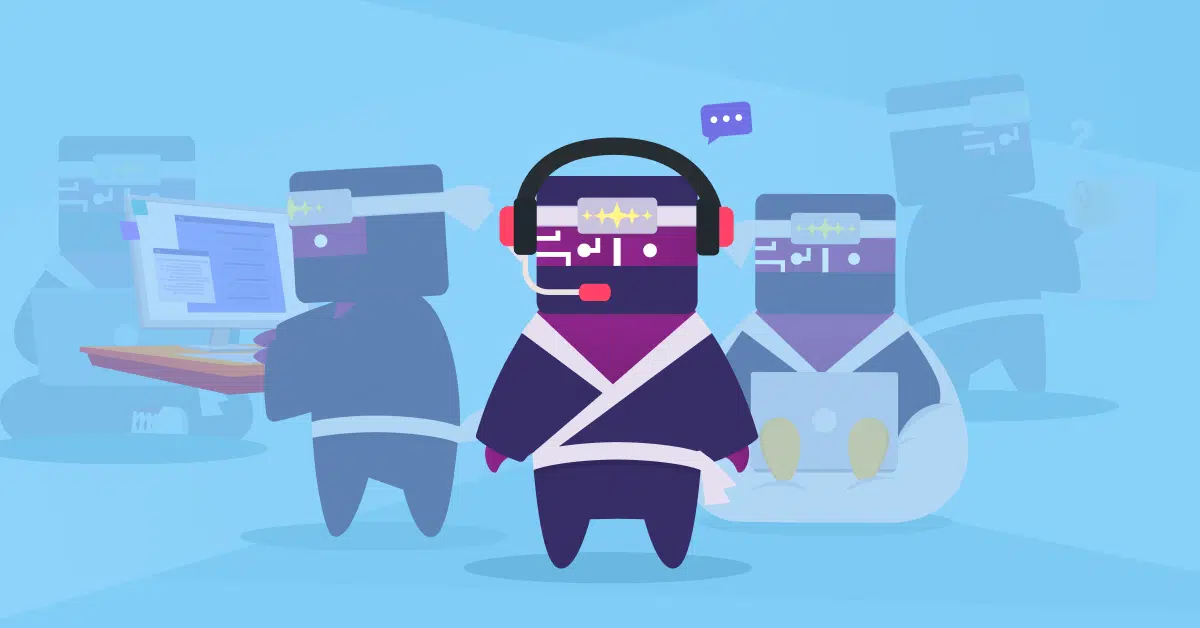As your team grows and you start scaling customer support, you’ll likely face some increasing [and interesting] challenges.
But with the right strategies in place, bigger teams or more tickets don’t necessarily mean more headaches.
We’re here to prove that and show you how you can handle even the most unexpected collaboration issues.
We’ve gathered all the best practices that will help ensure that your customer support efforts keep up. Even as your team and workload expand.
What goes into scaling customer support?
Growing requires a lot of careful planning that will ultimately help you boost your customer retention stats even when the number of active tickets is close to getting out of hand.
Ahead of the upcoming changes, you need to equip your agents with the right tools and mindset to help them answer customer queries quickly and effectively.
Moreover, agents should also have a comprehensive understanding of the company’s products or services. Additionally, you’ll need to provide them with all the resources they need to better understand customer needs and concerns.
Scaling also comes with an extra responsibility on both you and your agents to optimize response time as well as focus on creating repeatable processes for recurrent questions.
Those are all important aspects that go into scaling customer support in order to provide a stable service for customers.
And we’re looking into the ways you can do that through 7 actionable best practices for scaling customer support.
1. Automate repetitive tasks and manual labor
Your customer service team can save a lot of time by simply automating repetitive tasks that don’t need to be handled manually.
Two core areas you could automate to scale customer support include:
- Reporting and insight generation
- Quality assurance for support tickets
Tip: We recommend putting a person in charge of managing automation and regularly checking in to see the results. Note that not everything should be automated. For tasks that have to do with people and how they feel (e.g. like employee relations or coaching), stick to more personal, one-on-one interactions.
With Kaizo, we are bridging the gap between machine automation and the sentient human with a focus on the needs of customer service agents. To learn more about Kaizo’s AI and automation features, try Kaizo for free or continue reading the article.

2. Build a solid knowledge base
Organizing knowledge in an efficient manner gives your agents access to correct and up-to-date information while also providing your customers with fixes and answers quickly.
When creating your own comprehensive knowledge base, start by determining which topics would be most efficient for your agents to have immediate access to. Once you’ve picked the topics, create content for each one of them so that both your agents and customers will find them helpful.
A knowledge base should ultimately cover every aspect of your product. But as you’re just getting started [and to avoid misunderstandings], Damian Reed, Customer Success & Support Manager at Teamgage, recommends keeping it short and sweet:

Remember the next steps: You’ll need to update these regularly whenever a product change happens as well as to prevent broken links from affecting the user experience. You should also evaluate the performance of your knowledge base by using reporting and data analysis tools such as customer satisfaction surveys or agent feedback forms.
3. Run continuous training for your teams
To make sure an agent receives continuous support, consider providing coaching. This could include regular individual or group sessions [depending on the size and needs of your agents] as well as active, daily feedback sharing.
Take advantage of coachable opportunities to instantly turn metrics into actionable advice and next steps for your team members. This is particularly helpful if you’ve got a heavy backlog where you need to keep support agents motivated and engaged by building a positive reinforcement feedback loop:
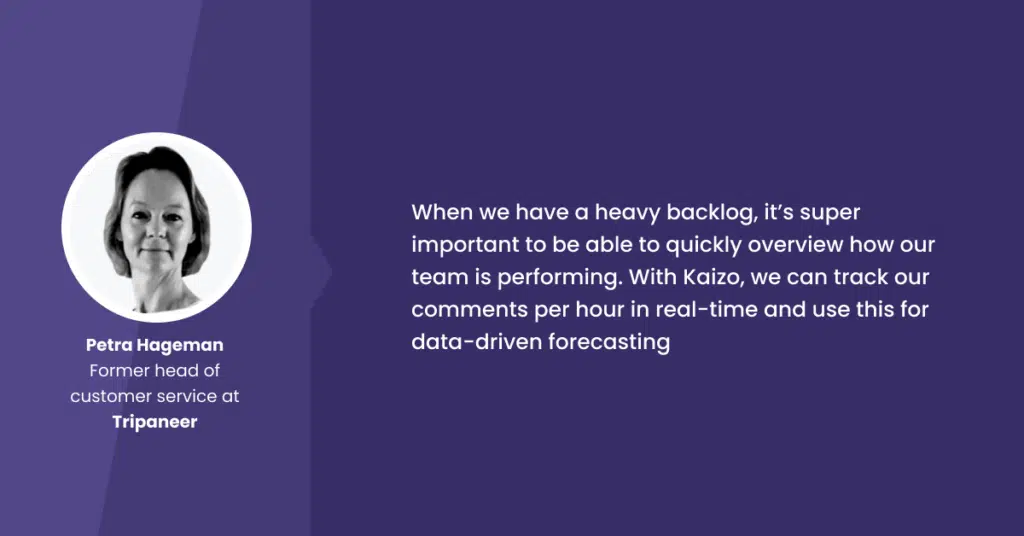
All of these help agents identify new ways to better serve customers and understand their own expectations. This extra step ensures your agents have the support they need to stay knowledgeable on product offerings and provide the best possible customer service.
👉 Read our complete guide to coaching support teams for better performance outcomes.
4. Anticipate staff capacity and demand
To provide a consistently high level of customer service across multiple channels, make sure you’re able to anticipate the capacity and demand for your support team.
This ensures support requests won’t go unanswered and customers will have their issues addressed within minimal wait times. It also keeps your team motivated to work on improving their processes and customer support experience.
On the same how to structure a support team note, Paulo Barud, Regional Support Manager at Agorapulse America, specifically recommends anticipating hiring so you’re not rushing it when you truly need more agents:
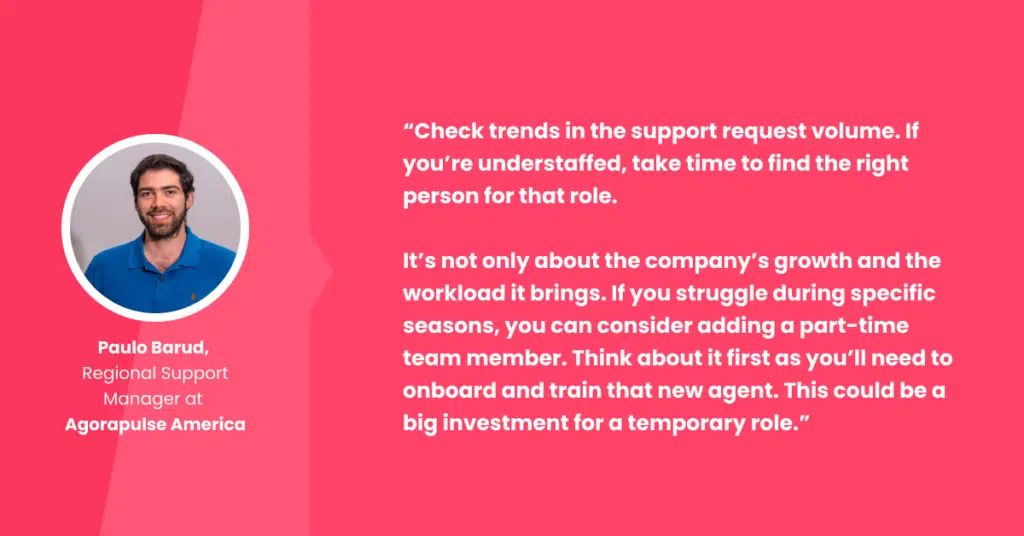
Use Kaizo’s heatmaps to identify the business times and patterns so you can prepare your team [and maybe even get some extra help]. This lets you plan your team’s capacity so you won’t overbook or underbook anyone. Plus, it highlights productivity patterns you can follow up on to see if an agent had any blockers during a slower time.
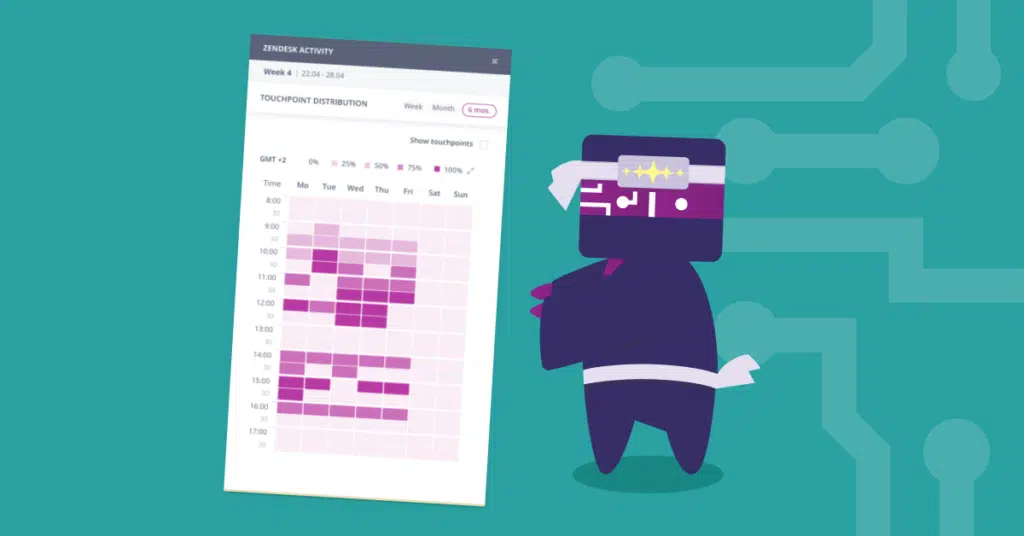
5. Create a self-service resource center AND make it easier for customers to solve their own problems
Giving your customers a self-service resource center can be a great way to reduce support team workloads. You’ll be scaling customer service and still ensuring that customers get their questions answered promptly.
By creating an online support database, customers can quickly access the information they need to solve issues on their own. Such libraries could include FAQs, knowledge base articles [more details under point 2 above], and support documentation.
Here’s an example of what the support library could look like for your customers:
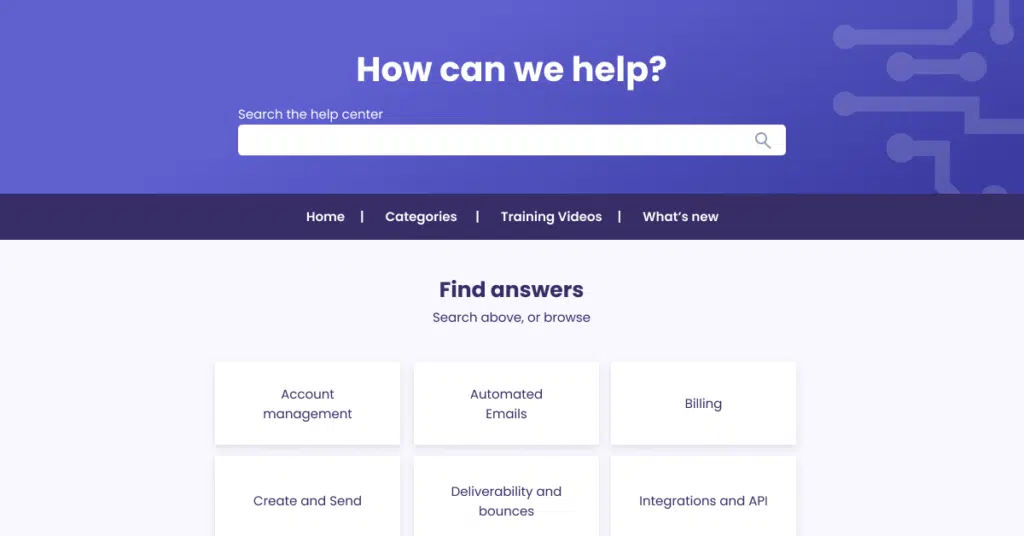
Maryna Paryvai, Manager of Customer Support at Banzai, recommends ensuring that all customer-facing documentation, such as product manuals, FAQs, and any other relevant support materials, are available in the external help center:

Self-service resource centers will also eliminate the need for support staff to respond manually to basic queries. Furthermore, automated support processes such as chatbots or forums will allow customers to get immediate assistance. Even when there’s no support agent available to answer their questions in real time.
This takes us to another strategy on how to scale an organization…
6. Use bots for easy questions or to take some workload away from your teams
If set up properly, your support agents no longer need to spend hours answering repetitive customer queries as bots can handle this task safely and effectively.
Bots not only improve customer service but also take some of the workload away from customer support teams. This makes their daily tasks simpler and easier to complete.
Queen Joseph, Customer Success & Support Ops Consultant, recommends bots to help provide proactive support without having to hire too many reps:
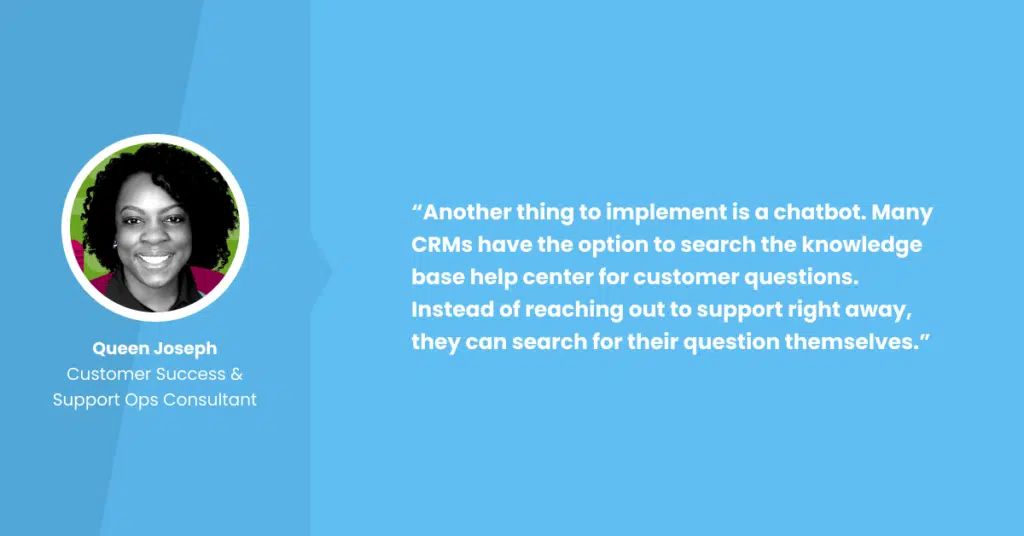
7. Consider outsourcing your support efforts
Outsourcing customer support efforts is a smart move if you’re scaling and want to provide the same level of customer service, especially if you are in a seasonal business and hiring new agents just for two or so months doesn’t make sense. By outsourcing, you have the opportunity to pick and choose contractors who are highly qualified and experienced in your particular industry.
This reduces the risk of hiring more internal team members, cuts down costs associated with training, and takes the burden off your existing team’s overloaded workloads.
When working with contractors, make sure they adhere to the same standards of quality you expect from your existing team.
What’s next for scaling support?
During the scaling process, taking small steps can create the impact you want.
It all comes down to staying organized and providing thoughtful direction for the team.
The above strategies are designed to help you master scaling customer service without any major hurdles.
However, this doesn’t mean you won’t experience challenges along the way.
Start by listing the most pressing challenges you expect.
For instance, if you’re estimating a much larger number of tickets as your product expands, consider building a chatbot or hiring more contractors to help during busier times.
Properly mapping out agent activity can also help you prevent overworking your team while you scale support. After all, happier support agents mean more loyal customers, improved response times, and overall excellent service.
